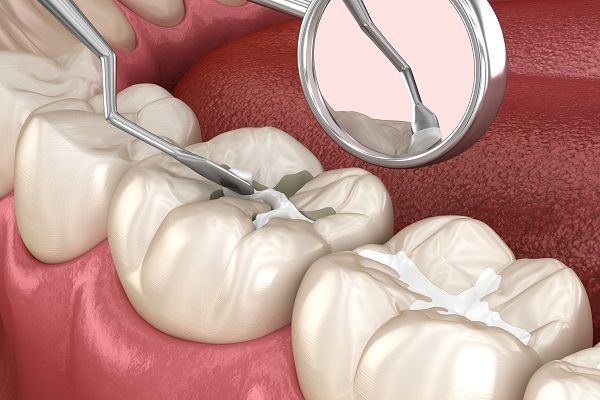The most recent advice from the American Academy of Pediatric Dentistry is that kids should have their first dental visit by the time they turn one or, if that happens sooner when their first tooth erupts. No parent has ever said that this is the best developmental period to start going to the dentist because toddlers are so cooperative. Let's face it, many of us enjoy going to the dentist. However, young children may experience more anxiety during the treatment as a result, which could lead to dental anxiety. Children and parents alike may fear taking their children to the dentist, but that doesn't have to be the case. There are ways you can support your child in overcoming dental phobia before their upcoming appointment with a pediatric dentist.
My Child Freaks Out at the Dentist. How Do I Conquer Dental Anxiety?
Making it out of your child’s dentist appointment without tears, fears, or biting can be done. However, if this has been your child’s reaction to previous dental visits, you may find this hard to believe. It is difficult to see your child in distress. Dental anxiety can cause plenty of it, including sweating, shaking, dizziness, and even tingling “pins and needles” sensations. Severe dental anxiety in children is difficult for the child and the parent, but don’t let a bad visit in the past set you both up for future stress. Whether your child is concerned about an upcoming dental visit or they are gearing up for a full-blown struggle and panic, read on for tips to keep in mind if you want to ease your child’s fears.
Don’t Judge Based on One Visit
Any parent knows how easily children change their mind. The meal they couldn’t live without for months can suddenly be refused, and favorite outfits can be deemed unacceptable overnight. Kids can be fickle judges of just about everything, and many parents report their kids as anxious for one visit but perfect angels the next. If you’ve had an unpleasant experience at the pediatric dentist in the past, go into this next visit with a positive attitude. Your child may be inspired to adopt it.
Tell Them What to Expect from Their Visit
Children thrive on predictability, but they also have very few life experiences to draw from. This is why fear of the unknown can be a problem. Your child is afraid because they don’t know what to expect, but you can ease their worries by explaining what happens at a pediatric dental visit. There are videos you can watch online as well as plenty of great books on the subject.
Use Relaxation Techniques
There are many helpful relaxation techniques you can use with children, and these can be lifesavers during a trip to the dentist. Visualization exercises, calming music, progressive muscle relaxation, and meditation have all been successfully used to calm children at the dentist. Being silly is also a great way to relax, so try to keep the mood lighthearted and fun.
Consider Systematic Desensitization
If your visit is a planned routine exam and not a last-minute emergency, you may have time to use systematic desensitization to make your child’s dentist visit go smoothly. Gradually expose your child to happy images of children receiving dental care. This process typically takes longer because it involves multiple visits to familiarize the child with the instruments, sights, and sounds of the dentist’s office.
Choose a Dentist Who Offers Sedation and Behavior Management
Preparing Your Child for the Dentist
Conquering dental anxiety starts with how you prepare your child for the dentist appointment. If your child hasn’t been to the dentist before, they won’t know what to expect. This is when you should begin implementing techniques to help prepare them. Whether this is your child’s first trip to the dentist or they have been before, your next visit doesn’t have to be an ordeal. Use the following strategies to make routine dental care easier.
Take Them to Their First Appointment at 1 Year Old
According to the American Academy of Pediatric Dentistry, your child’s first dentist visit should take place when they get their first tooth or by their first birthday, whichever comes first. Many parents are surprised by this recommendation because your toddler will not be likely to have dental problems if they barely have teeth. However, early visits set your child up for a lifetime of dental confidence.
Use Positive Words
As parents, our words have power. To help an anxious child to calm down, encourage them to tell you about their fears. You can reassure them they are safe and answer any questions they have. Help your child to conquer their dental fears confidently by allowing them to create and direct a narrative about how the visit is going to go. Choosing their own happy ending will put them in the driver’s seat.
Use Positive Visualization
Like positive words, positive visualization can also have a powerful impact, so consider relying upon guided imagery scripts to help your child copy. Children are imaginative, and your child will love being able to use their imagination to transport themselves into a story they can picture themselves in. Create a visual narrative that will help them see themselves having a happy dentist visit.
Choose a Pediatric Dentist
If your child’s first pediatric dentist visit is coming up, you can count on your dentist to help. Pediatric dentists have two to three years of specialty training on top of dental school, and they are familiar with the needs of children who are suffering from dental anxiety. Many offices are decorated with positive images that were specifically chosen to reduce anxiety. Many offices give prizes like stickers, small toys, or t-shirts your child may look forward to.
There is hope for even the most fearful child when it comes to dental anxiety. Check out these methods in advance to see which ones your youngster reacts to. You may have time to start preparing your child as it is advised that most kids visit the dentist every six months for checkups and to prevent cavities. Your last awful dentist appointment can very well be the last one if you put some thought, effort, and ingenuity into it.










